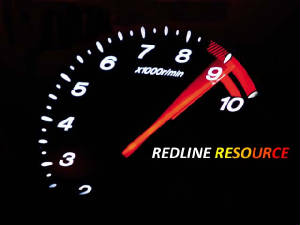|
To provide you with the latest and greatest on the automotive industry, it is important to first look at it's history.
It has been long-argued about when the automotive business in North America really got started, but most will agree
that the industry began to take shape from its growth between the late 1800's and early 1900's. It was within this period
that the industry began to resemble today's.
In the photograph to the right of this paragraph
is a man that changed the way the automotive industry did business forever. Henry Ford, probably best-known as the owner of
the Ford Motor Company, and the father of the Model T, also brought a new technology to the world in the early 1900’s.
Between 1908 and 1915, Ford was responsible for the implementation of the assembly line. Although it is not known who officially
created it, the assembly line changed the automotive industry forever.
This allowed the company to mass-produce the Model T. In
creating large production numbers, Ford allowed the company to lower production costs and therefore the price of his vehicle.
Today, manufacturing one car for everyone would seem like a far-fetched idea, but it paid off incredibly for Henry Ford. Between
1908 and 1927, over fifteen million Model T’s were built, a feat unheard of in its day. This technology would later
be adopted by almost every car manufacturer on Earth, with the exception of low-volume exotics.
Even back then, the industry changed quickly. In 1919,
90% of all cars sold were a two or four-door roadster format with an open top. By 1929, 90% of all cars sold had a roof. It
is this adaptability that has allowed the automotive industry to persevere so well over time. Up until World War Two, most
cars were still relatively simple by today’s standards. Big, long, elegant cars were still all the rage, with Cadillac
producing a sixteen-cylinder car between 1938 and 1940.
It was after the Second World War that cars began to take
the shape of today’s vehicles. Huge, curvy fenders and running boards gave way to tail fins and chrome. The Post-War
vehicles of the 1950’s and 60’s were some of the most powerful and sought-after vehicles ever produced. Un-restored
vehicles from these times still fetch six-figures at auction. The 60’s saw the development of the horsepower race, with
American Muscle dominating the scene. Cars went from not having enough chrome to not having enough horsepower. The sky was
the limit...until the 70’s.
The early 1970s saw the rise of a fuel crisis, and the
horsepower race was choked out by emissions restrictions as engine outputs plummeted across the board. Those fuel-starved
times saw the rise of the import brands, with their small-displacement, fuel-efficient vehicles being imported by the boat
load. This provided an opening that otherwise wouldn’t have been available for non-domestic manufacturers to make their
name in the North American market, which had been dominated up until then by American nameplates like Chevrolet, Chrysler,
and Ford (The Big Three).
The Oil Crisis had been just the break the Import manufacturers
had needed to get a foot-hold on the North American market, and they were here to stay. Domestic manufacturers had laughed
off the idea that consumers wanted small, fuel-efficient vehicles until the crisis hit, and they were completely unprepared
for the shift in demand. It was times such as these, coupled with lacklustre quality that saw the market control begin to
slowly slip away from the Domestic brands. It began slowly, but we all know where this switch has lead us.
Fast-forward to the 1980’s and 90’s and the
increase in product quality and offerings from Import brands were obvious: they were all over the road. Customer satisfaction
surveys showed just how happy customers were with Import Products. In just 20 years, the market had changed completely. The 1990’s saw the introduction of another niche: the Sport Utility Vehicle.
Domestic manufacturers saw the opportunity and immediately seized it. SUVs were high-profit items, and gas was cheap again.
Consumers loved these gas-guzzling behemoths, and bought them...a lot of them. Domestic manufacturers were happy again.
SUVs and Pick-Ups seemed like the big-thing in the early
2000’s, so much so that even Import manufacturers began building them. Unfortunately, history has a way of repeating
itself. The worst happened again: the price of oil sky-rocketed, and demand for SUVs plummeted. Consumers once again wanted
cheap, fuel-efficient vehicles. To make matters worse, 2007 saw not only the automotive market, but the world economic market
begin to decline. Buyers began to get scared, and simply stopped buying.
2008 has seen an all-time low for both the economy and
the automotive market. The Big Three, once dominate in North America, are now below 50% market share for the first time in
history. Many manufacturers have posted seven-figure losses quarterly, and are now looking to parliament for financial assistance.
In these trying times, it is important to know that the industry will evolve and battle through. Chevrolet has shown pioneering
spirit with the Volt, the world’s first mass-production-intended plug-in hybrid. Will it be the way of the future? Who
knows, but Redline Resource intends to find out.

|
